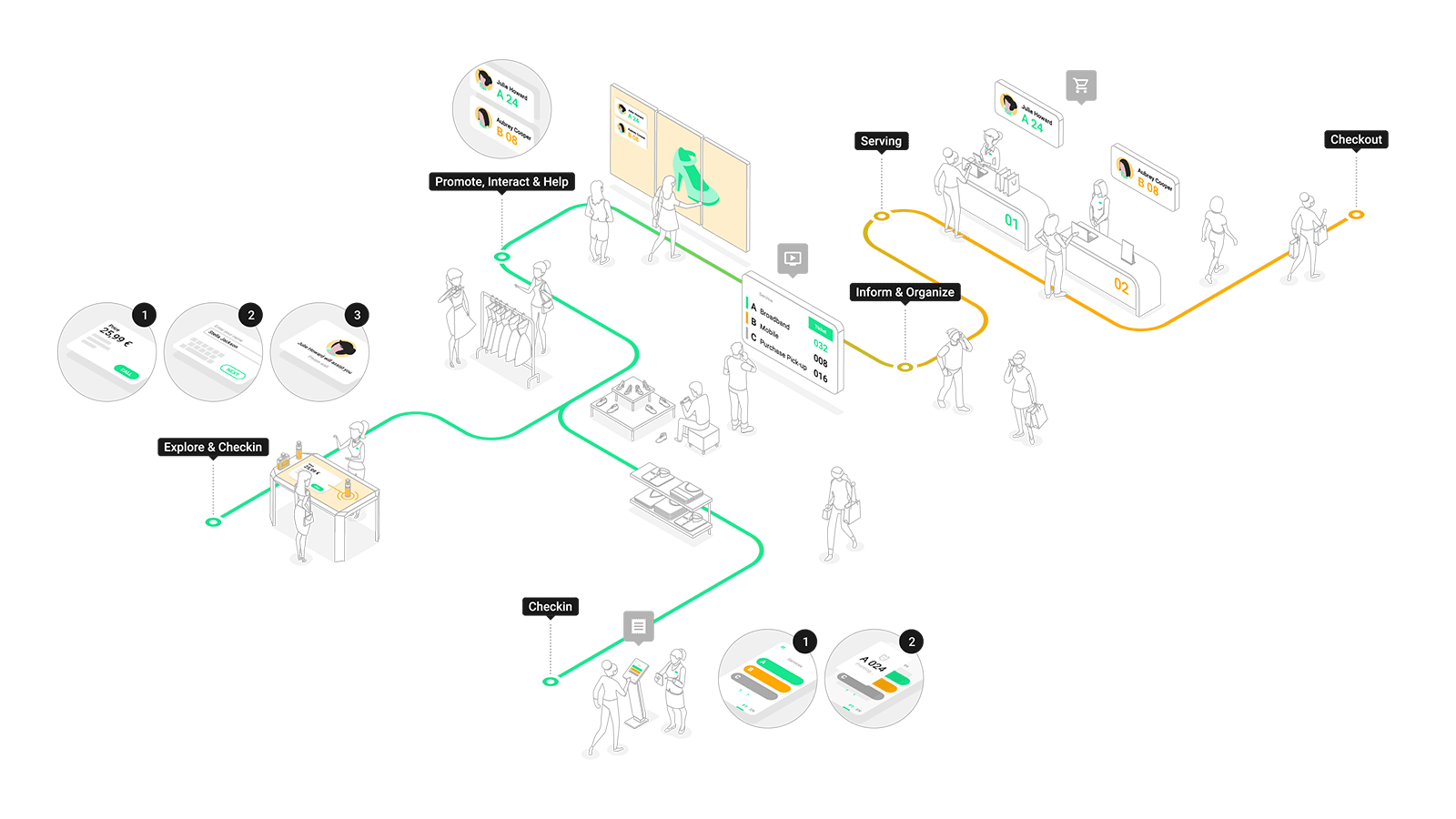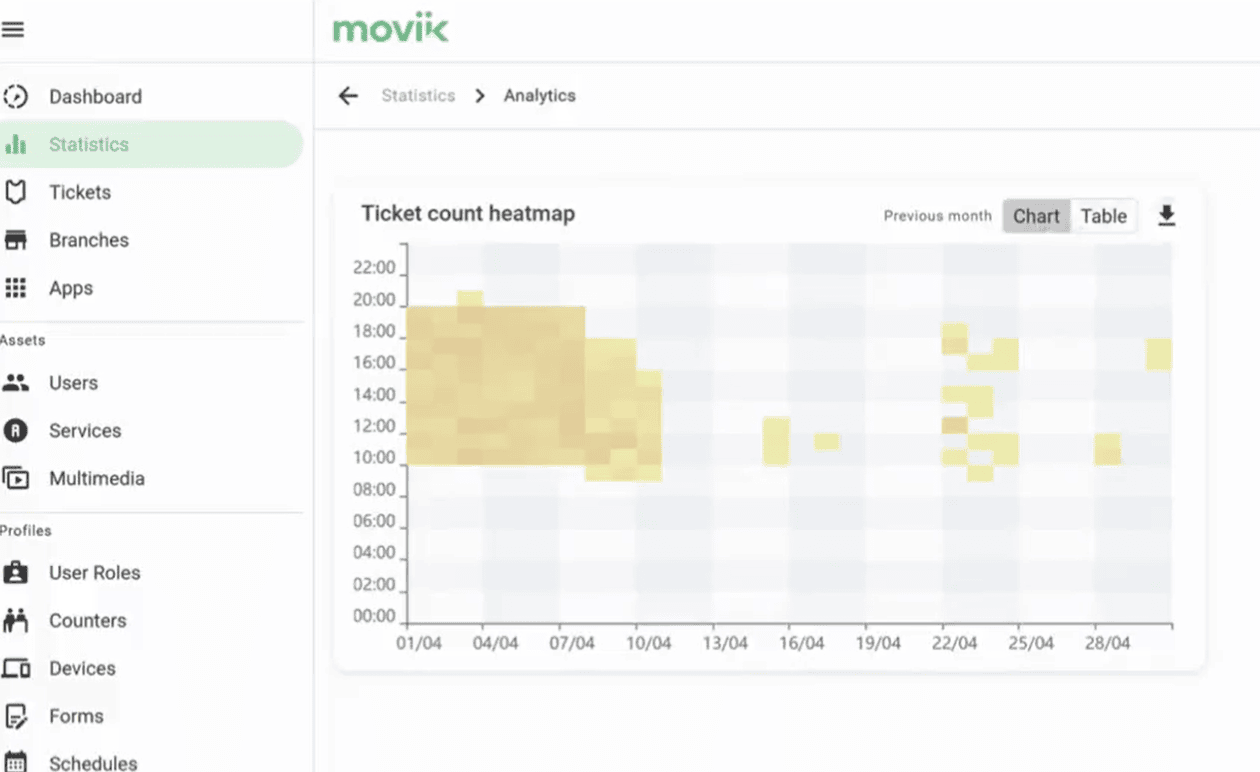How Queue Management Drives Better Staff Allocation
Effective queue management plays a vital role in how businesses allocate staff and manage daily operations. Beyond simply organising customer flow, it provides essential data and flexibility that help optimise workforce deployment, reduce waiting times, and improve overall service quality.
How Queue Management Drives Better Staff Allocation
Real- Time Data Enables Quick Response
Real- Time Data Enables Quick Response
Queue management systems track customer arrivals, waiting times, and service durations in real time. This immediate insight allows managers to quickly adapt staffing levels when unexpected surges occur, preventing bottlenecks and long queues.
For example, if a sudden influx of customers is detected at one counter, managers can reassign staff from less busy areas to maintain smooth service.
Queue management systems track customer arrivals, waiting times, and service durations in real time. This immediate insight allows managers to quickly adapt staffing levels when unexpected surges occur, preventing bottlenecks and long queues.
For example, if a sudden influx of customers is detected at one counter, managers can reassign staff from less busy areas to maintain smooth service.
Data-Driven Scheduling
Data-Driven Scheduling
Using historical data on customer traffic, businesses can identify recurring patterns—like busy mornings, lunchtime peaks, or weekend surges. This information supports creating staff schedules that align with actual demand, ensuring adequate coverage without overspending on labour.
Using historical data on customer traffic, businesses can identify recurring patterns—like busy mornings, lunchtime peaks, or weekend surges. This information supports creating staff schedules that align with actual demand, ensuring adequate coverage without overspending on labour.
Balanced Workload and Employee Wellbeing
Balanced Workload and Employee Wellbeing
Long queues and overworked employees often go hand in hand. Queue management helps distribute customer flow evenly, avoiding staff overload and reducing stress. This not only maintains service quality but also contributes to higher staff retention and satisfaction.
Long queues and overworked employees often go hand in hand. Queue management helps distribute customer flow evenly, avoiding staff overload and reducing stress. This not only maintains service quality but also contributes to higher staff retention and satisfaction.
Flexible Staff Deployment
Flexible Staff Deployment
Advanced queue management solutions offer features such as customer redirection, virtual tickets, and the ability to open or close service points dynamically. These options make it easier to adjust staffing in real time, deploying personnel where they are most needed.
Use Real-Time Displays to Set Expectations
Use Real-Time Displays to Set Expectations
- Improved customer experience: Shorter wait times and smoother service lead to higher satisfaction and loyalty.
- Higher operational efficiency: Staff are used where they add the most value, minimising idle time.
- Cost savings: Avoid unnecessary overtime and reduce the need for temporary hires.
- Better planning: Reliable data allows managers to make informed decisions and optimise workforce management.
- Improved customer experience: Shorter wait times and smoother service lead to higher satisfaction and loyalty.
- Higher operational efficiency: Staff are used where they add the most value, minimising idle time.
- Cost savings: Avoid unnecessary overtime and reduce the need for temporary hires.
- Better planning: Reliable data allows managers to make informed decisions and optimise workforce management.
Queue management is a practical tool that supports smart staff allocation and improves operational flow. By using data and flexible systems, businesses can respond to changing demand quickly, create a better working environment for employees, and deliver consistent service quality to customers.
Queue management is a practical tool that supports smart staff allocation and improves operational flow. By using data and flexible systems, businesses can respond to changing demand quickly, create a better working environment for employees, and deliver consistent service quality to customers.








